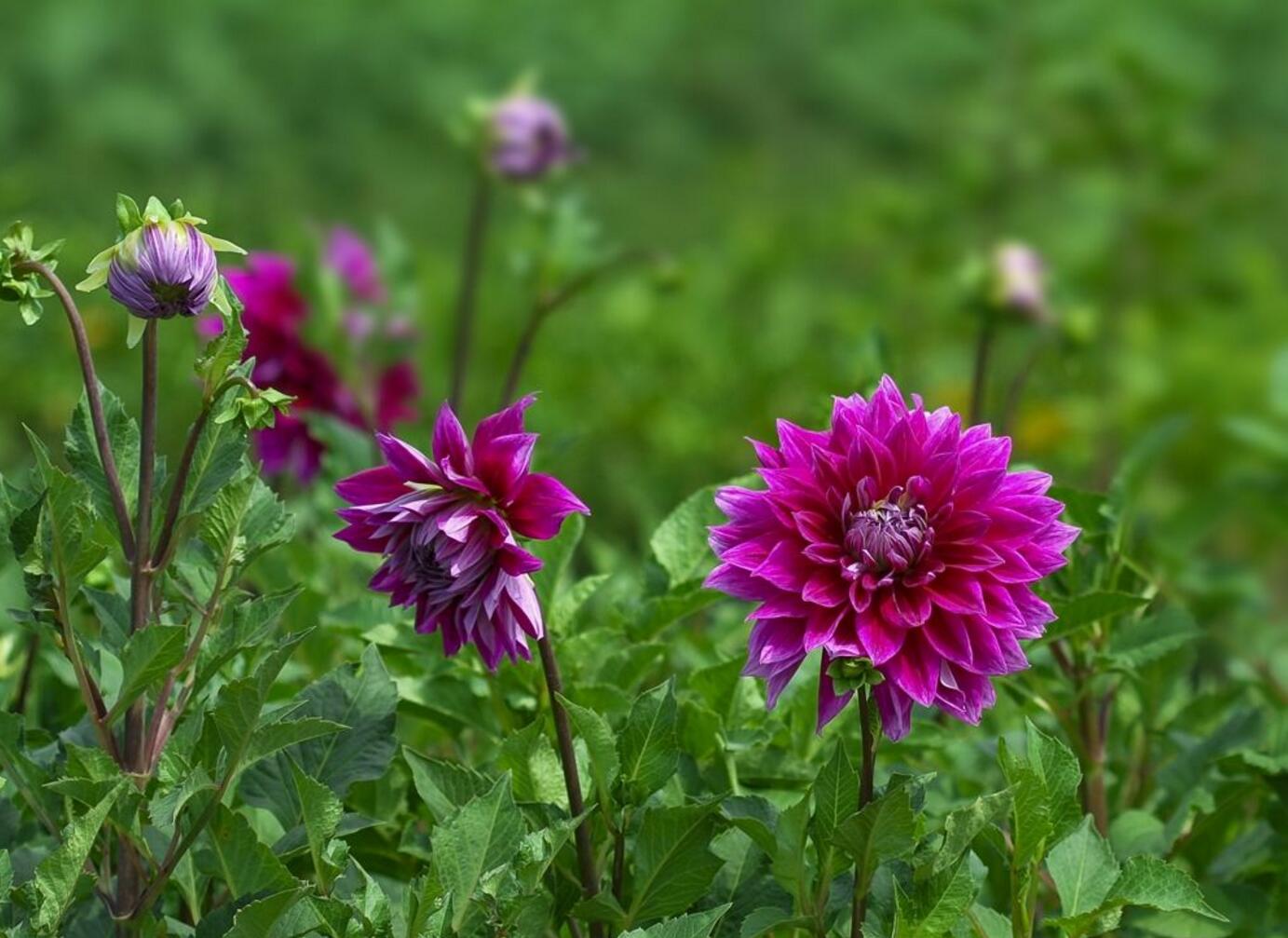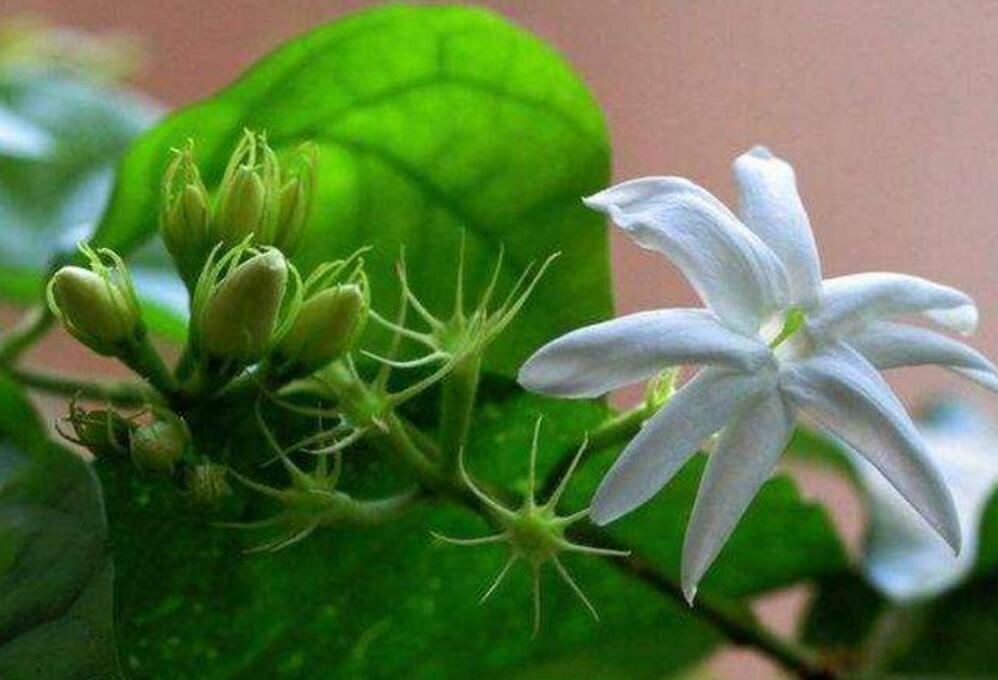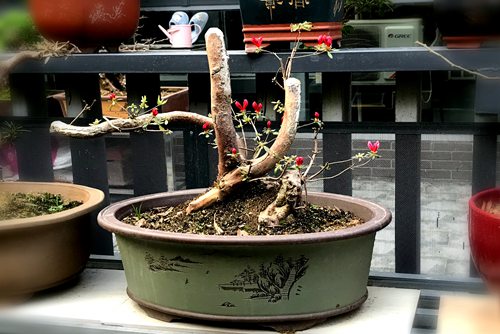How do you raise dahlias? Introduction to the maintenance and Management of Dahlia
Dahlia is a famous flower in the world, which is famous for its many varieties, rich colors, strong vitality and so on. There are more than 30,000 varieties of dahlia, which is one of the species with the largest variety of flowers in the world. There are 11 common dahlias, such as Shouguang, Chaoyang, beauty and so on. Dahlia is one of the most famous flowers in the world. Dahlia is loved for its magnificent colors and beautiful flowers. Mexicans regard it as a symbol of generosity and richness, so they respect it as the national flower. The theme flower of the 12th Shanghai (International) Flower Show also chose Dahlia as the theme flower. How to raise dahlias? How can we plant auspicious dahlias? Today, Huacao Le shares with you the knowledge of conservation and management of Dahlia.
How do you raise dahlias? Introduction to the maintenance and management of Dahlia 1. Dahlia planting
Dahlia likes sandy loam which is loose, rich in humus and well drained. The soil formula of culture is generally made up of 5 parts of garden soil, 2 parts of rotten leaf soil, 2 parts of sandy soil and 1 part of cake fertilizer. Loosen the soil in time in the daily management and remove the waterlogging in the basin.
two。 Dahlia fertilization
Dahlia likes fertilizer, and rarefied liquid fertilizer is generally applied every 10-15 days from seedlings. Once every 7-10 days after the appearance of flower buds, fertilization should be stopped when the flower buds are transparent. PH6.7-7.8 can grow well. The amount of fertilizer applied depends on the growth of the plant. The leaf color is light and barren, which is the phenomenon of lack of fertilizer; the leaf edge scorched or leaf tip yellowing is excessive fertilizer; the leaf is thick and dark green, which is the performance of suitable fertilization. In order to make the stem thick, the concentration of fertilization should be increased every time.

3. Dahlia watering
Watering should follow the principle of "dry and thoroughly watered". Dahlia likes water but is afraid of stagnant water, because Dahlia is a fleshy root, which is easy to rot if it is watered too much. Due to the luxuriant branches and leaves of Dahlia, there is more water. Dahlia watering, generally the seedling stage in the early growth stage, the need for water is limited, sunny days can be watered once a day, to keep the mound slightly moist, too dry and wet are not suitable. In the later stage of growth, the branches and leaves are luxuriant and consume more water. In sunny or northerly weather, it is easy to lack water at noon or evening, and the amount of water should be increased appropriately.
4. Dahlia temperature, light
Dahlia is not strict on temperature. It can grow normally between 5-35 ℃, but 10-25 ℃ is the most suitable. Dahlia likes light and is not tolerant to shade. If it is placed in a shaded place for a long time, it will have poor growth, weak roots, thin leaves and thin stems, light flowers, and even can not blossom. Therefore, potted dahlias should be placed in a sunny place. The leaves need sufficient light during the growing period, and the daily light is required to be more than 6 hours, so that the plants are strong and the flowers are large and plump. If the sunshine is less than 4 hours a day, the branching of stems and leaves and the formation of flowers and seedlings will be affected to a certain extent, especially if there is little sunshine, the flowering is not smooth, the growth of stems and leaves is poor, and it is easy to get sick.
5. Dahlia shaping and pruning
To cultivate dahlias with small and medium-sized flowers, only the lateral buds on the lower nodes of the stem are removed to make them bloom one after another. If you want to cultivate large single flowers, only the apical buds should be retained and the rest of the lateral buds should be removed. At the end of June and the beginning of July, after the first flowering, the weather is getting hotter and the plant growth slows down, which can be pruned at this time. When pruning, the stem should be twisted and drooped in the middle of the branch and between the two leaves, leaving a height of 20cm to 30cm. A few days later, part of the wound dried up and then cut. This can prevent Rain Water from pouring into the hollow stem and causing rot. It can blossom again until October.
6. Regulation of florescence of Dahlia
Dahlia flowers are gorgeous, bright flowers stand on the green branches and leaves, and flower beds with potted plants in various shapes can better show the beauty of the group. therefore, they are often the key decorative flowers for beautification and greening on National Day. So how can we make the dahlias bloom around the National Day as scheduled? Renewal and pruning can be carried out after the first flower cut in early July. First twist off the branches to be cut, leaving a height of about 20 centimeters, and then cut them off after wilting, in case Rain Water is poured into the hollow stem to cause rot. Watering should be properly controlled after shearing, and new buds can sprout from the base of the stem soon. If you want to cultivate a single dahlia, when the new seedlings grow to a certain height, all the lateral buds will be removed, leaving only the main branches. In this way, the buds can blossom for more than two months, which is needed to watch the flowers on the National Day.
7. Disease and pest control of Dahlia
(1) powdery mildew: damage to leaves, tender stems, flower buds and other parts, spraying 80-1000 times of topiramate at the initial stage of the disease.
(2) Botrytis cinerea: in the rainy season or rainy weather, the tender shoots, young leaves and flower buds rot in brown or dark brown, and are covered with gray mildew layer. After the onset of the disease, remove the affected site, and spray 50% Dysen zinc 800-1000 times solution.
(3) bacterial wilt: bacterial disease, infecting aboveground parts and roots, high temperature and humid weather, high soil water content. 1% formalin can be used for soil disinfection before planting, or after the disease, the diseased plants can be removed in time and sprayed with 70% dimethazone 600-1000 times.
(4) virus disease: spread by virus-carrying insects, grafting and juice, and timely spraying to eliminate virus-transmitting insects.
(5) Dahlia borer moth: the larvae bite on the leaves, stems and hearts of dahlias, and when they grow up, they do harm to the stalks, and in serious cases, the whole plant dies. Can be artificially killed before the larvae enter, and spray 50% fenitrothion 100 times solution; after the larvae are eaten into the stem, 30% 50% dichlorvos emulsion is injected.
Time: 2019-04-29 Click:
- Prev

How to raise jasmine flowers? can you trim and change pots in spring?
When spring returns to the earth, the temperature gradually rises, and the jasmine that is placed indoors can be removed from outdoor conservation in order to avoid the cold. The jasmine leaves that have been stored for several months are rare and lifeless. At this time, I want to trim, trim and change the basin for Jasmine right away. So how to raise jasmine now? can you trim and change pots?
- Next

Cultivation methods and matters needing attention of Rhododendron how to raise Azalea
At the end of March in Yangchun, two rhododendron stumps purchased last year blossomed in potted cuckoos, a pot of pink and a pot of peach blossoms. Although there are only branches and flowers, lack of a little green leaves, but also have a different charm. How do you grow azaleas? The following is a summary of my cultivation methods and matters needing attention for the conservation of azaleas in the past two years as follows
Related
- Fuxing push coffee new agricultural production and marketing class: lack of small-scale processing plants
- Jujube rice field leisure farm deep ploughing Yilan for five years to create a space for organic food and play
- Nongyu Farm-A trial of organic papaya for brave women with advanced technology
- Four points for attention in the prevention and control of diseases and insect pests of edible fungi
- How to add nutrient solution to Edible Fungi
- Is there any good way to control edible fungus mites?
- Open Inoculation Technology of Edible Fungi
- Is there any clever way to use fertilizer for edible fungus in winter?
- What agents are used to kill the pathogens of edible fungi in the mushroom shed?
- Rapid drying of Edible Fungi

